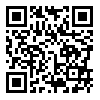BibTeX | RIS | EndNote | Medlars | ProCite | Reference Manager | RefWorks
Send citation to:
URL: http://saremjrm.com/article-1-67-en.html
Introduction: Before foundation of the midwifery school, there was no classical education on midwifery and only traditional midwives undertook this responsibility. The lack of knowledge in this field led to the high rate of maternal and neonatal mortality. The aim of this study was to explore a historical period of midwifery education, in which the maternal and neonatal mortality rate decreased. Lack of exploration on the history of midwifery education in Iran and lack of information about its process are the deficits of Iranian medical history. In order to achieve the historical evidence on the midwifery history in Iran, the documents of formal midwifery education available at the National Library and Archives Organization of Iran were reviewed.
Conclusion: Midwifery in Iran was performed traditionally and based on the personal experiences of people up to 1919. In this year, Mirza Ahmad Khan Nassiroddowleh, the Minister of Education, ordered that the French high school for girls called "Franco-Prussian" be changed to "Dar-Al-Moallemat" and 10 students of the high school go to the women's hospital 3 days a week to study midwifery and gynecological diseases. Dr. Mathilde Dremps was recruited as a gynecologist to teach them; thus, the midwifery school was founded. After that, even the traditional midwives were requested to pass the exams.
Received: 2017/02/25 | Accepted: 2017/06/22 | Published: 2018/08/23
| Rights and permissions | |
 |
This work is licensed under a Creative Commons Attribution-NonCommercial 4.0 International License. |






